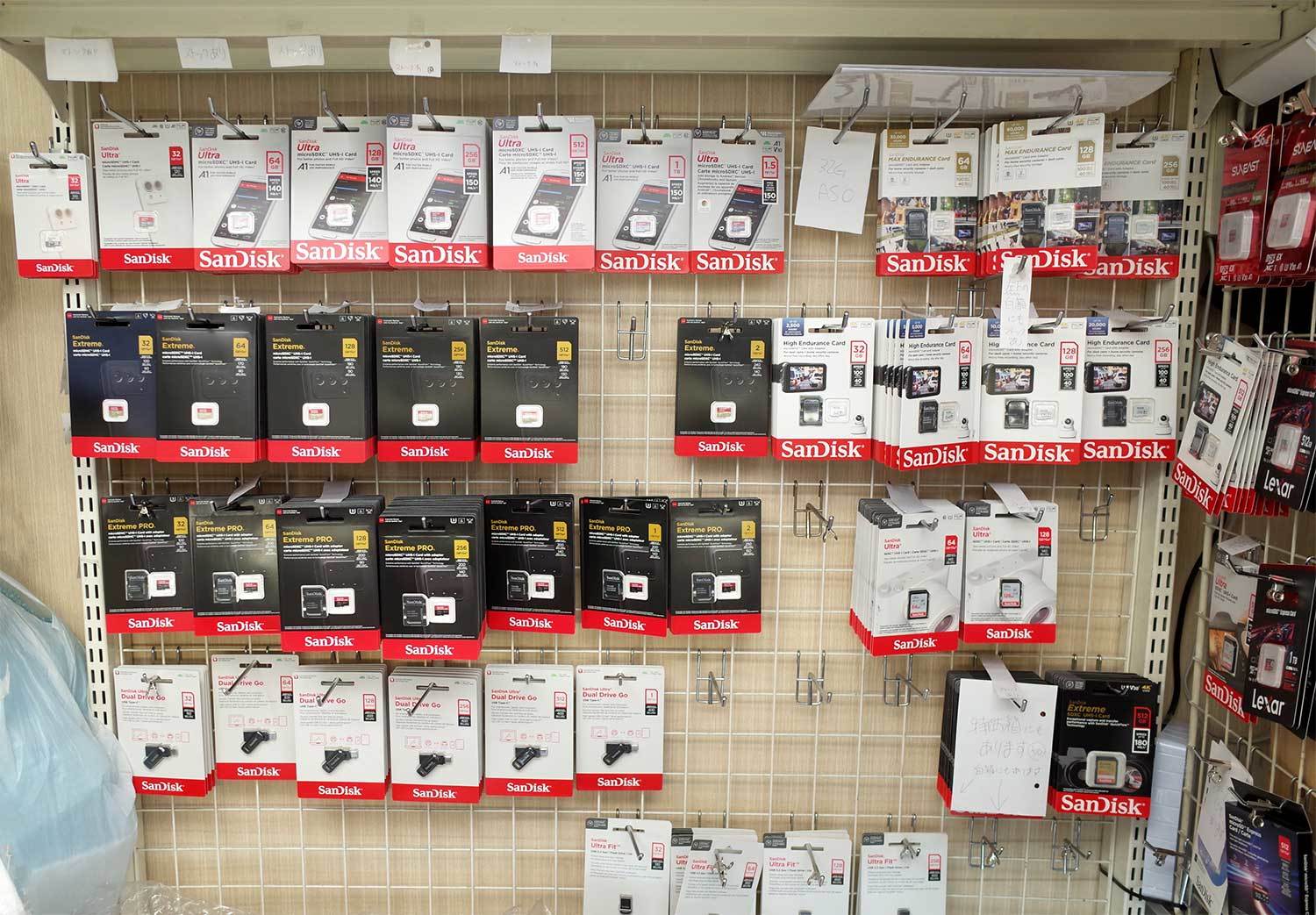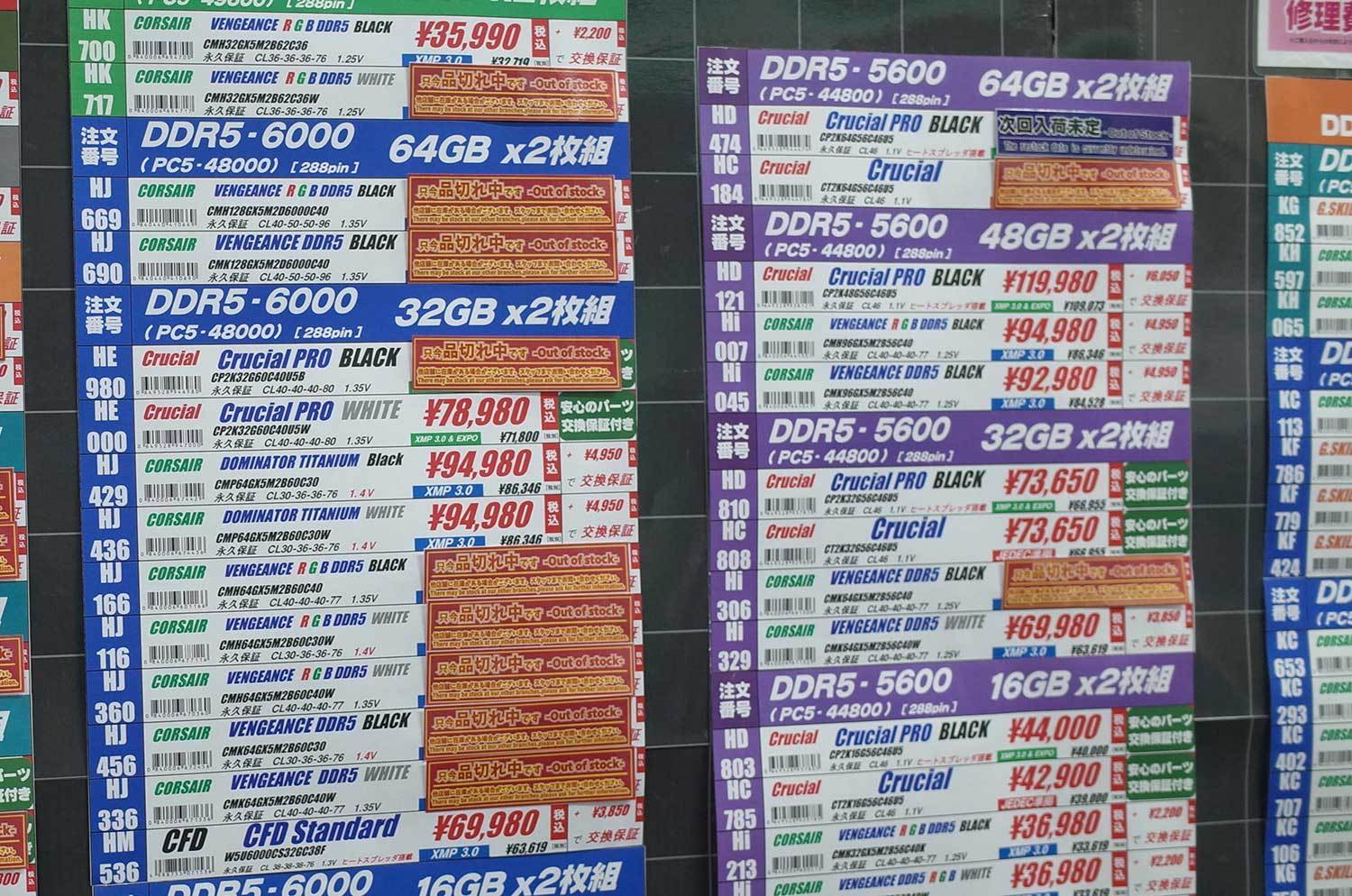Large-capacity microSD cards are now regularly out of stock in Japan as storage crunch claims another victim — high-capacity HDDs are also vanishing

New reports are now coming in from Japan, courtesy of IT Media, highlighting that customers are starting to pivot to high-capacity microSD cards to meet their storage needs. As a result, high-capacity MicroSD cards are now also encountering shortages.
We're currently traversing through one of the worst memory shortages in recent times, a situation that's expected to only get worse next year. Alongside DRAM, storage is also affected on an unprecedented scale, as data centers need every bit of flash they can get, leaving scraps for consumers to sift through.
"The larger versions of the popular series keep running out of stock," commented Technohouse Toei, a popular computer vendor in Tokyo. "This might drag on for a while." The models affected are 512 GB, 1TB, and 2TB microSD cards that offer a real substitute to SSDs and HDDs. Now that microSD Express is a thing, leveraging the PCIe interface and NVMe protocol with proper HBM support, it's actually feasible in these dark times that compact flash storage is replacing M.2 drives, at least when archival duties are not in the picture.

Speaking of drive shortages, Japanese stores also mention how large-capacity HDDs are being swept up and anything that remains on shelves is increasingly overpriced. One shopkeeper said, "It looks like large-capacity models are getting sucked up for AI use, so we aren't getting any stock at all. Everyone knows what's going on, so even if the price goes up, the drives sell out immediately… and the cycle repeats." In comparison, SSDs are "not as bad as HDDs," according to the retailer PC SHOP Ark in Chiyoda.
Memory is still the worst outlier, with DDR5 prices on the rise exponentially, racing to beat all records. The same 64GB Corsair Vengeance 5600 MT/s kit that cost ¥40,000 (~260) in early November, now costs ¥70,000 (~460) just three weeks in. That's an almost doubling on top of the already inflated $260 price tag it was sitting at. Still, these numbers are not as harrowing as the situation in the West, at least for now. Graphics cards, on the other hand, are relatively stable, but the rumor mill suggests they'll also be hit in 2026.



"Even when we finally get a shipment, the wholesale price has gone up by tens of thousands of yen. It’s happening all the time," said Tsukumo eX when referring to the ongoing DDR5 memory shortage. The number of physical price tags or stickers is visibly shrinking in stores because there's just not enough stock to sell. The AI boom is singlehandedly responsible for creating this landscape, and it's showing few signs of stopping anytime soon.

Follow Tom's Hardware on Google News, or add us as a preferred source, to get our latest news, analysis, & reviews in your feeds.
Get Tom's Hardware's best news and in-depth reviews, straight to your inbox.

Hassam Nasir is a die-hard hardware enthusiast with years of experience as a tech editor and writer, focusing on detailed CPU comparisons and general hardware news. When he’s not working, you’ll find him bending tubes for his ever-evolving custom water-loop gaming rig or benchmarking the latest CPUs and GPUs just for fun.
-
JRStern Once again Intel takes it in the shorts having sold off their flash memory business a couple of years back.Reply
meanwhile - what does it mean to our world that a "micro SD card" now holds terabytes?